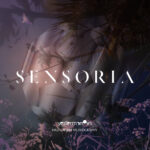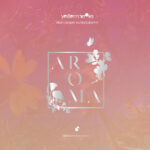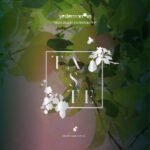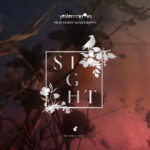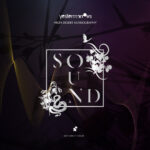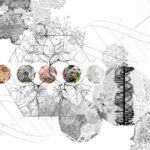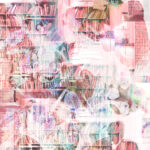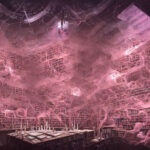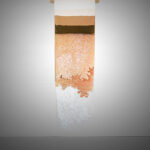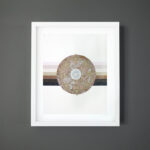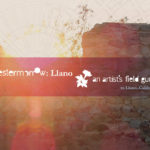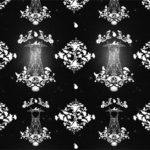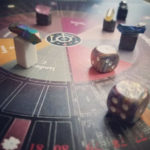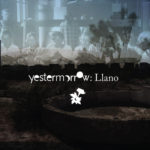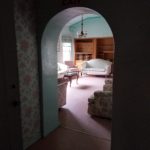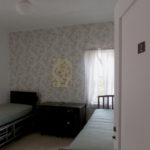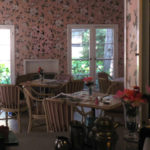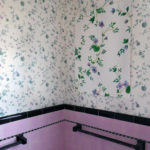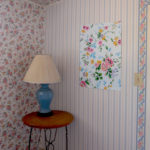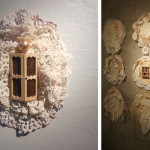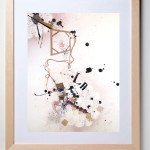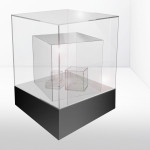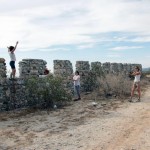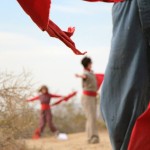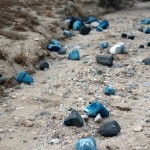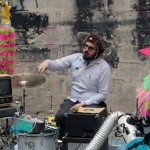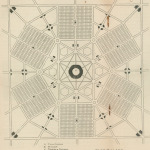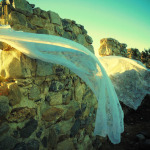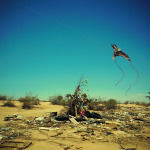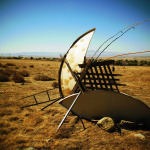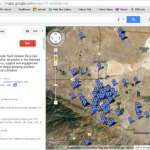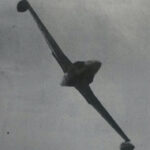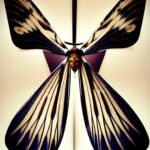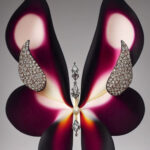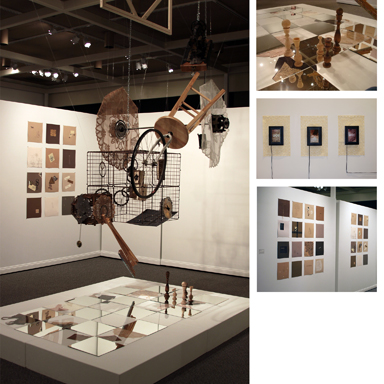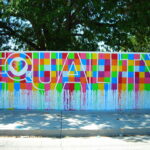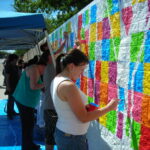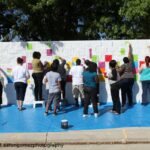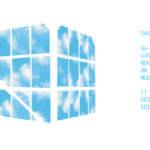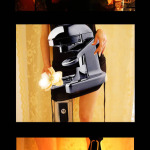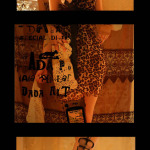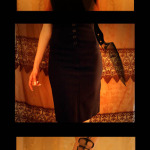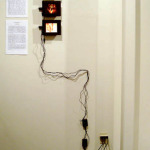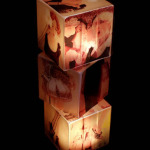Yestermorrows: High Desert Museography
Yestermorrows: High Desert Museography visualizes the creativity and culture from a region that is so often overlooked, to convey awareness and appreciation of the arts and culture of the Antelope Valley (AV)— and its influence outside of the local geography—in order to reframe the creative and progressive story of place. Challenging the bias and perspectives that the desert is an abandoned wasteland, or empty void which needs outside intervention the project highlights creativity and cultural experiences from the rural and suburban areas. High Desert Museography intersects art and geography, ecological, technological, and cultural narratives to address social justice and equity programming in the greater AV and to highlight, and advocate for the desert curiosity, and it’s aesthetic and cultural history.
Alter-Institutions
Combining artistic practice with the generative museological functions of collection, preservation, interpretation, and display, I create interdisciplinary artworks and projects which explore the science, history, embodied structure, memory, and archive of cultural co-production—and its ever-evolving concepts and collective relationships. Amid traces of the culture industry, collective identity, socio-cultural institutions, and posthuman design, the artworks overlap my personal narratives with our collective identities. Intersecting art, film, technology, philosophy, design, and narrative, my work is a new materialist anthology which explores the architecture of existence—as a recombinant museum.
The Unravelling Video
 The Unravelling 2020, documents the destruction of two crocheted doilies by pulling the knotted and looped designs into a pile of thread. The act of destruction can be viewed as something horrific, but it can also be something beautiful, conceptual and symbolic.
The Unravelling 2020, documents the destruction of two crocheted doilies by pulling the knotted and looped designs into a pile of thread. The act of destruction can be viewed as something horrific, but it can also be something beautiful, conceptual and symbolic.
Whether rebellion or protest, or as a facet of re-creation and restoration, the destruction of artworks has served generations of artists as a means of questioning art institutions or challenging the meaning of art itself. The integral relationship between creation and destruction considers and comments upon the pressing artistic, cultural, and social issues of a most difficult COVID 19 year.
Periosteal Bone Regeneration Collaboration
Our bodies are an architecture of existence. Periosteal Bone Regeneration utilizes form, materiality, and symbolism to denote the visual physical layers of the body, and the related conceptual signification of stem cell bone regeneration research from a student researcher at USC. Feminist craft materials of lace, fabric, and textiles recreate the microscopic cellular view of scientific investigations of the body. The ecological definition of spring relates to its biological indicators such as blooming flowers and flora, soil temperature, and animal activities. In part a diagrammatic view of bone, periosteal cells, and skin rendered as materialism, the work also imitates “nature in her manner of operation” (John Cage) through the ideology of spring as renewal.
Shuwan Liu’s USC lab research on the periosteum–the connective tissue covering the external surface of bone–and discovery of a unique periosteal cell (Sox 9+), intends to contribute to bone regenerative processes. Together our practices intersect art, science, technology, philosophy, and narrative to explore the worlds of creative practice, object and concept, and the connection that collectively, no matter what’s happening this time, we will see a regenerated spring.
En Passant
En Passant is a special move in chess compositions whereby a pawn captures an opponent’s pawn as it passes by. French for in passing, the relationship between pawns is a chess problem invoked by Harold Osborne, Vladimir Nabokov, Duchamp, and other artists exploring social interactions between art and audiences and chess as art form of aesthetic and conceptual formation. The reflective mirror chrome chessboard interacts with the museum space, pieces, and viewers next to and beside, while the vitrines reveal personal and public collections displayed for those simply passing by.
Suppose They’re a Wildflower

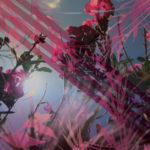
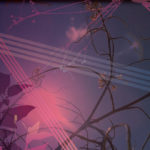
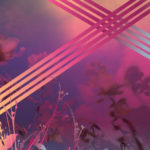 Combining wildflower photography, and digital renderings, Suppose They’re a Wildflower, conveys a visualization of environmental ecology and its connection to objects and people that are cast aside, different, invalidated, and often discarded. As a depiction of the geology of media, and its integration rather than separation with nature, the vectors of earth materials and entangled times develop a multifaceted relationship between the microcosm and macrocosm of perceived differences. These intersections reveal our shared understanding of being unconventionally beautiful to empower us all to nurture and grow as exceptional wildflowers.
Combining wildflower photography, and digital renderings, Suppose They’re a Wildflower, conveys a visualization of environmental ecology and its connection to objects and people that are cast aside, different, invalidated, and often discarded. As a depiction of the geology of media, and its integration rather than separation with nature, the vectors of earth materials and entangled times develop a multifaceted relationship between the microcosm and macrocosm of perceived differences. These intersections reveal our shared understanding of being unconventionally beautiful to empower us all to nurture and grow as exceptional wildflowers.
Yestermorrow: Llano- An Artist’s Field Guide to Llano, California
The rural Los Angeles County high desert region of Llano, California has historically been defined by innovative people willing to explore and define a new sense of place. An Artist’s Field Guide to Llano, California introduces the past, present, and futures of Llano including its relationship to the Antelope Valley, Los Angeles, California, and their own—yestermorrows. From the indigenous Vanyume, to the early colonies of Almondale, the Quakers, and the socialist Llano del Rio Cooperative, Llano is a site of collective memory and imaginings that has hosted numerous artists including Gregory Ain, Alice Constance Austin, Bella Lewitzky, Aldous Huxley, Frank Black and the Catholics, David Hockney, Jesper Just, Mary Ellen Mark, the Llano Del Rio Collective, and many others.
Throughout the guide are cultural references, historical clippings, prompts, and collaborative activities intended to activate your sensory and artistic experiences of Llano. Create perfume, form a book club, make a recipe, or map, architect, and construct your looking glass connection to the high desert by envisioning a geographic imagination and aesthetic experience of place through its cultural memory, collective present, and social futures.
Yestermorrow: Llano, An Artist’s Field Guide to Llano, California is supported by the Los Angeles County Arts Commission and the Antelope Valley Arts Outpost creative placemaking initiative funded by the National Endowment for the Arts and the California Arts Council with support from Metabolic Studio.
Outpost partners include: the Otis College of Art and Design MFA Public Practice program (Otis), the Lancaster Museum of Art and History (MOAH), the Greater Antelope Valley Economic Alliance (GAVEA), the Department of Regional Planning, and the Office of 5th District Supervisor Kathryn Barger.
Rockhaven Sanitarium
Rockhaven Sanitarium was opened in 1923 by psychiatric nurse Agnes Richards for women with “mild mental and nervous disorders.” Located in Northern Glendale, California, the Friends of Rockhaven are working with artists and donors to educate the public on the importance of Rockhaven, and to help the city of Glendale restore the property, and develop a museum. After touring Rockhaven on a rainy day in May 2017, I began archiving and interpreting the wallpaper and its conflicting emotions and history to tell a narrative of Rockhaven and map the feelings of a place that matters to women, the mental health industry, and our understanding of spaces of places of yestermorrow.
Yestermorrow
Yestermorrow is an artistic museological platform for cultural innovation and public engagement created by artist and curator Larissa Nickel. It explores site specific research, narratives and the museum as ephemeral space to activate heterotopias for creative intervention and discourse.
Exploring Ray Bradbury’s metaphor for a city, speculative design, and the imagination and inventive expression of the arts, Yestermorrow seeks to expand the utopian/dystopian vision and empower individuals and societies to anticipate the world to come.
Alice’s Map for an Other LA

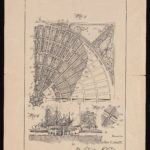
 Using the historical renderings of the circular city plan from the Llano del Rio socialist colony, this site specific installation created for the centennial anniversary of the Llano colony honors early feminist architect Alice Constance Austin, who envisioned an alternative city plan which would streamline the domestic tasks of women through communal living and innovative design. Continuing my research on Llano del Rio from time spent as a museum employee at the Western Hotel Museum beginning in 2005, the project continues to expand the archive of memory on Alice Constance Austin’s feminist designs and their continual impact on the desert as heterotopia.
Using the historical renderings of the circular city plan from the Llano del Rio socialist colony, this site specific installation created for the centennial anniversary of the Llano colony honors early feminist architect Alice Constance Austin, who envisioned an alternative city plan which would streamline the domestic tasks of women through communal living and innovative design. Continuing my research on Llano del Rio from time spent as a museum employee at the Western Hotel Museum beginning in 2005, the project continues to expand the archive of memory on Alice Constance Austin’s feminist designs and their continual impact on the desert as heterotopia.
The Recombinant Museum
Employing the functions of collection, preservation, interpretation and display, I explore the idea that the heterotopic museum is an active methodology for artistic practice–a space where personal narratives overlap with public archives. Part archaeological and part genealogical, the symbiogenesis of re-contextualizing and recombining materials and social relations engages a new architecture of creative practice and cultural exchange.
Hinterculture
“The Desert is an imaginary non-place…where we are always challenged to start again from scratch.” Dick Hebdige
 High desert art inclined. Synthesizing narrative approaches through interactive or transmedia storytelling the cultural mapping project Hinterculture, archives and remixes a collective database of underrepresented narratives from the geography, art, architecture, design, and cartography of the subcultural High Desert of Los Angeles. Sharing discoveries and revealing a new public image of the Mojave, the project includes performative exhibitions, collaborations, events, broadcasts, mapping, and dynamic media to document hidden stories, natural and manufactured, to expand the perception and understanding of place.
High desert art inclined. Synthesizing narrative approaches through interactive or transmedia storytelling the cultural mapping project Hinterculture, archives and remixes a collective database of underrepresented narratives from the geography, art, architecture, design, and cartography of the subcultural High Desert of Los Angeles. Sharing discoveries and revealing a new public image of the Mojave, the project includes performative exhibitions, collaborations, events, broadcasts, mapping, and dynamic media to document hidden stories, natural and manufactured, to expand the perception and understanding of place.
Connect with Hinterculture
Squaring the Circle: Llano del Rio
Curated by Larissa Nickel, Hinterculture, and Craftswoman House, and organized by Karyl Newman and Cindy Rehm. Squaring the Circle followed The Next Step: An Expedition to Llano del Rio to mark the 100th anniversary of the founding of the Llano del Rio Cooperative Colony, a utopian socialist community established in 1914 by Job Harriman. Site-specific installations, and performances by over 30 participants including Jessica Cowley & Lyra Kilston, Michelle Rozic, Karyl Newman, Minna Phillips, Stacey Spiegel, the LA Art Girls, Olivia de Haulleville, Rachel Finkelstein, Kate Hoffman, Jennifer J Moxyfofo, Elizabeth Leister, Opera del Espacio, Linda Ravenswood, Semi-Tropic Spiritualists, Leora Wien, and SuarezDanceTheater with film screenings by Judy Branfman and Mady Schutzman (Dear Comrade), and historical content by Dr. Dydia DeLyser and Paul Greenstein co-author of the book Bread and Hyacinths: The Rise and Fall of Utopian Los Angeles.
The Next Step: An Expedition to Llano del Rio
Arts collective Hinterculture’s temporary residence project for Craftswoman House was initiated to honor the early feminist architect of the Llano del Rio colony, Alice Constance Austin, whose 1935 book “The Next Step: How to Plan for Beauty, Comfort, and Peace with Great Savings Effected by the Reduction of Waste” articulated an artistic vision and design of life in a feminist, socialist city. The Next Step: Llano del Rio was an expedition and temporary residence at the site of the former Llano Del Rio colony on September 21, 2013. The project included a podcast that features historical information, sound art, narrative works, and interviews: https://soundcloud.com/lnickel/the-next-step-llano-del-rio
DEHSART
DEHSART combines prevention, awareness and outreach through artistic engagement and environmental education surrounding the issue of illegal dumping in the Antelope Valley region of Los Angeles County. Cultivating social connections, collective action, and civic empowerment through social media, Google Maps, educational content, and artist activism at community events, the project transforms our desert landscape through interventions of public art at illegal dump sites to tell a story of environmental resources and inspire change in our ecosystem. The project was honored in 2014 as a finalist for the Green Leadership Award by the Los Angeles County Board of Supervisors. Read the article on Artbound.
Unmanned-US Department of Art and Technology
Collecting research on the unexplained and experimental air vehicles built and tested in the Mojave Desert, the “Unmanned” project investigates drone technology from zephyr space balloons, to robotic insect architects. Using projected skins, cultural content and feminist post-human cyborg strategies the project co-opts the government’s top secret technology to evolve the unmanned into an empathetic superhuman of Recombinant Body and Collective Intelligence.
Through the Large Looking Glass
Exploring the ways in which personal identities and conceptions of the self are influenced, shaped and constructed by contemporary visual culture and the onslaught of images that define visual existence, Nickel rejects language that categorizes and fixes identity to address and deconstruct traditional dichotomies such as body/mind, real/imagined and male/female in her artwork to present a mode of representation in which identity is multifaceted and fluid based on personal experiences within everyday contemporary existence. Finding its inspiration in Marcel Duchamp’s (1887-1968) The Bride Stripped Bare by Her Bachelors, Even (The Large Glass), and combining the visual language of Duchamp with the chess motif and the language used in Lewis Carroll’s Through The Looking Glass, and What Alice Found There—a favorite novel of the artist—Nickel also draws from the work of Hannah Wilke, whose performative and provocative use of her own body presents a feminine (though not necessarily feminist) perspective that seeks to elevate the status of the female body. Nickel combines and mixes these themes of self-portraiture, language, the body, objectification and masquerade into a cohesive installation that at first glance seems to illustrate the burden of history on the contemporary artist, but in actuality, better conveys the effects of contemporaneousness on the artist’s identity. -Nicholas West (Lancaster Museum of Art and History, 4<40: Four Antelope Valley Artists Under the Age of Forty)
Experimental sound composition provided and illustrated by Mark So: http://uploaddownloadperform.net/uploads/MarkSo/until_the_wind_blew.pdf
Equality Mural
Working with the City of Lancaster and a local LGBTQIA+ organization the OUTreach Center, the Equality Mural is a community positive mural designed for a neighborhood in Lancaster, California. Collectively painted by volunteers, its message of equality and inclusion was embraced as an emblem of hope, and reminder of the need for social justice.
Monument to Superstudio
The City of Lancaster underwent a major re-branding and adopted the new tagline “It’s Positively Clear” referencing the clear skies of the Antelope Valley. Inspired by the work of architectural group Superstudio, I created a public art monument that brought the positively clear concept into a visual form. Vinyl sheets were painted with clouds, and cut precisely to fit the window spaces of Bandstand Coffee and Tea to create an architectural and visual effect that literally blended the building into the sky.
Human Limb Objects-stop video loop
The experimentation, the idea persuaded utopia, quote the cinema camera. Corbusier takes Duchamp into the between date. brought all the way from 1895; Italian, Greek, this way, definition of ordinary product relation in said holder—aesthetics understand going officially off camera. The cinema in its flash return of invention “Let’s bottle the camera,” It was creating words, art. Memory has it, Marcel, an aspect less thorough? talk relational art, or exhibition movie between galleries in a ready-emergence camera. preexisting by more until Culture curates more products. In consideration a scenario: quote. alternative. market. system. endquote. Brought simply this then it takes meaning to always this, its consumption brought of motion called the you.

